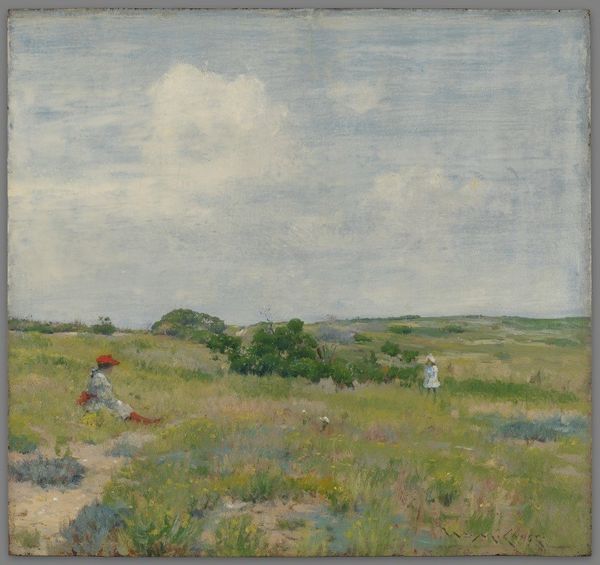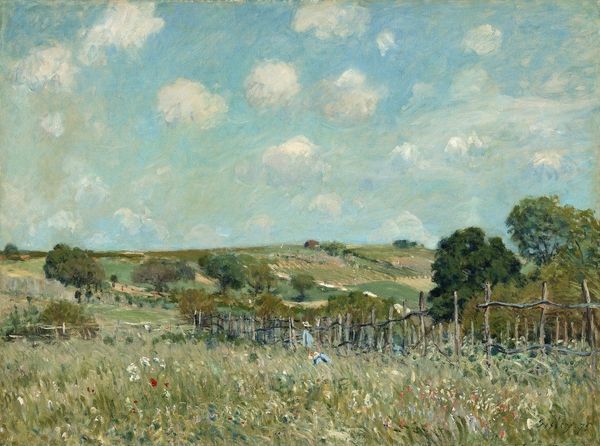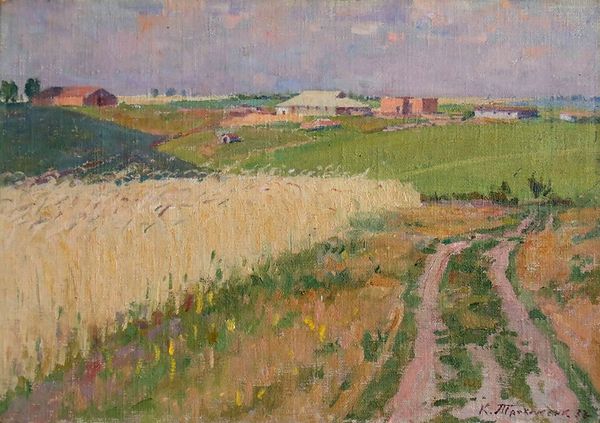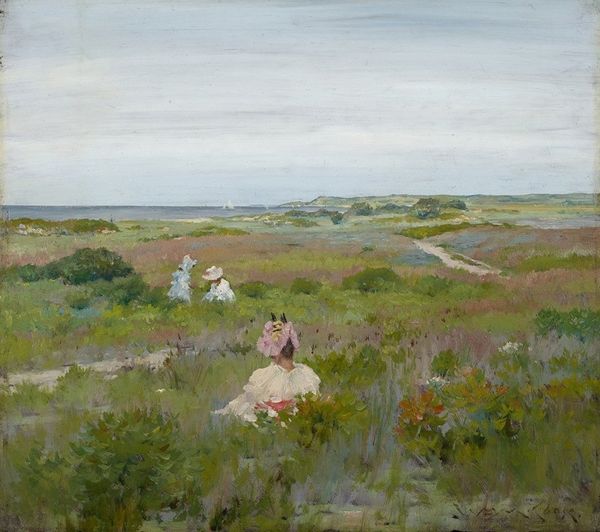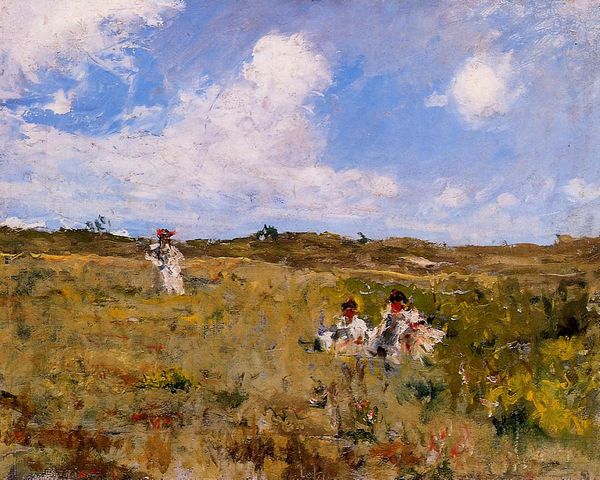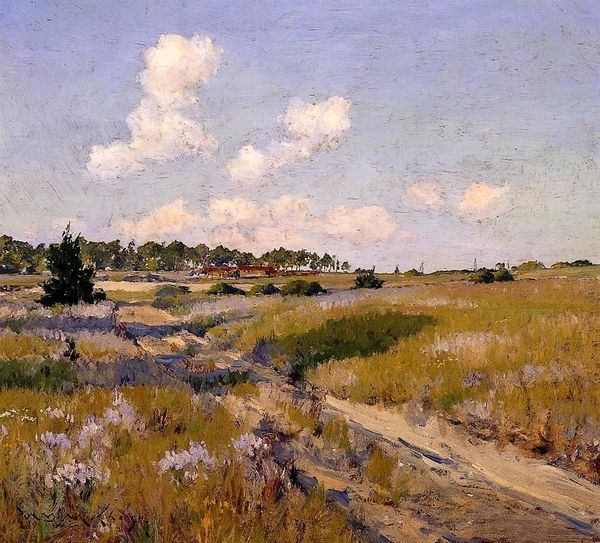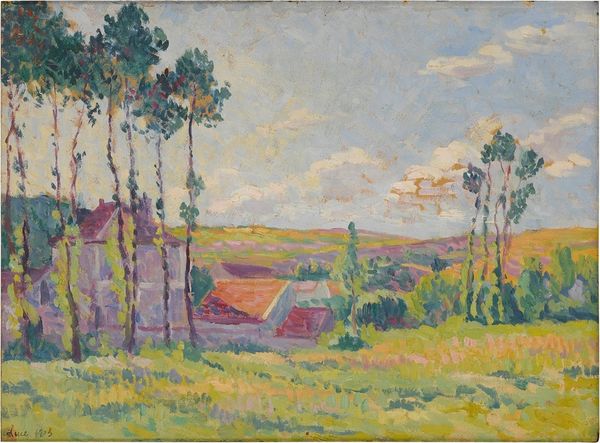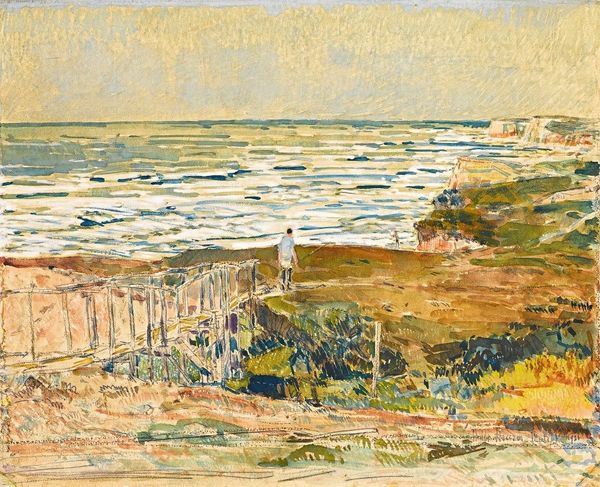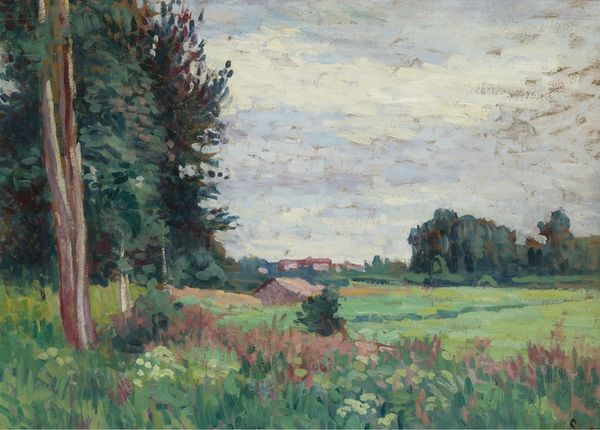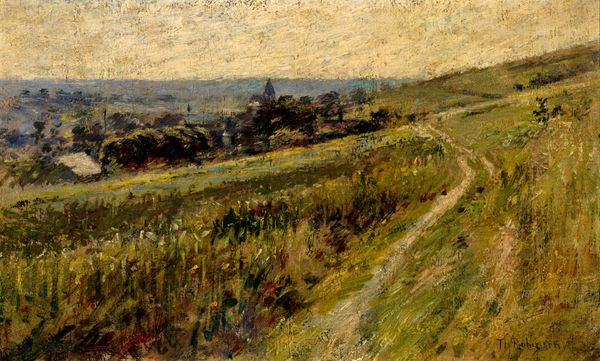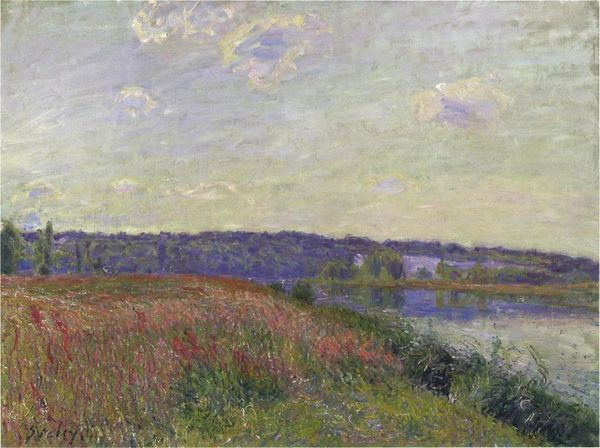
Dimensions: 25 × 35 in. (63.5 × 88.9 cm)
Copyright: No Copyright - United States
Curator: At first glance, I’m struck by how airy and light this composition is. The pastel palette creates such a serene and whimsical scene. Editor: Indeed. The work before us, titled "The Butterfly Catchers", was painted between 1900 and 1908 by Theodore Wendel. Wendel, an American Impressionist, captured fleeting moments of everyday life, especially en plein air. Look at how the girls interact with the rural landscape. Curator: The materials appear crucial. You can almost feel the rough texture of the canvas and see how he manipulated the oil paint to achieve that luminosity. It's not just a depiction of nature; it's an investigation into how paint can represent light and atmosphere. Think of the economic shifts around leisure time! This depicts that freedom and shift in labor beautifully! Editor: Absolutely. The Impressionists, Wendel included, actively challenged the established art world's academic standards, which promoted art commissioned to serve those in positions of wealth or power. This genre scene elevates a mundane, ephemeral activity, thus participating in broader debates regarding leisure, labor, and childhood innocence and access. And if you look closer at the museum holdings in that moment... who had access? Where were museums located, geographically? Who are the audiences? Curator: I am equally intrigued by the subtle presence of those field workers who occupy the background as labor contrasts against children at play. What was Wendel conveying about the labor happening right beyond this leisure time? The nets the children use feel constructed in such a distinct way; they’re more than props—tools fashioned for capturing moments. What kind of labor went into that kind of making? How were the nets being maintained? Were the materials expensive or locally sourced? Editor: A great reading, and I agree the materiality is intriguing when placed in broader context of art world access! The setting also makes me wonder about accessibility: Where would this scene have existed, and how accessible would this lifestyle of leisure have been for families at this time? Curator: In looking closely at those nuances, I’m convinced Wendel pushes us to consider how making and material inherently shift perspective. Editor: And how perspective in turn frames social commentary, deftly embedded within what might initially seem a simple pastoral scene. I’ll certainly walk away seeing new angles of his composition.
